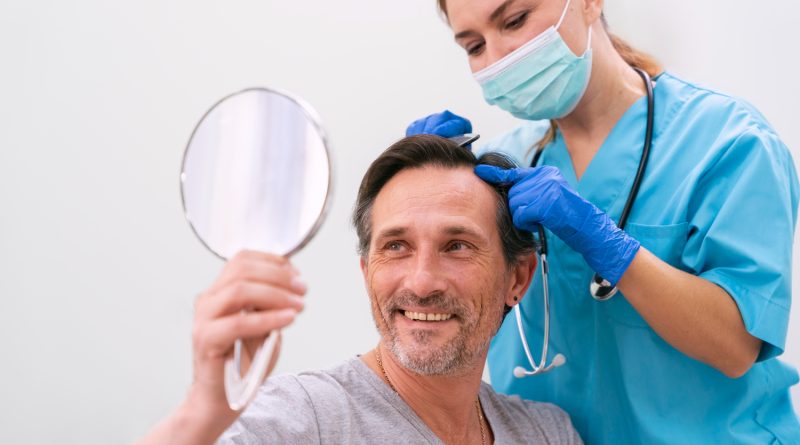Arthur Mikaelian: Exploring Natural and Medical Hair Restoration Options
Arthur Mikaelian, PhD, is a Los Angeles-based biotechnologist and entrepreneur known for pioneering research in regenerative medicine, peptide-based therapies, and innovative drug development. With a doctorate in biological neuropsychology from the Vernadsky Foundation-University, Dr. Arthur Mikaelian has led several groundbreaking ventures in biotechnology and quantum biology. His work integrates scientific precision with humanitarian goals, advancing peptide-derived treatments and regenerative methods that restore tissue, improve cellular repair, and address hair restoration at a molecular level. Through decades of research and innovation, he has contributed to the development of next-generation therapeutic technologies that merge science, nature, and technology to improve human health and well-being.
Natural vs. Medical – Choosing the Right Hair Restoration Method
Hair restoration has become a balance between scientific innovation and natural wellness. Both clinical and holistic treatments now address hair loss, with the best choice depending on its underlying cause, lifestyle, and personal goals. Each method offers unique advantages, creating a spectrum of solutions rather than a one-size-fits-all approach.
Natural hair restoration focuses on stimulating growth through lifestyle and non-invasive techniques. To promote follicle growth, develop a healthy scalp. Improved circulation, stress management, and nutrient-rich meals help. Biotin, vitamin D, zinc, and iron support follicular activity. Regular scalp massage oxygenates and nourishes roots. Rosemary, castor, and peppermint oils may increase hair density over time. Slow but effective, these strategies help maintain scalp health with self-care.
Advances in biotechnology have introduced medical treatments that address the deeper causes of hair loss. Pattern baldness medications like minoxidil and finasteride stimulate growth and reduce loss by influencing hormonal and vascular systems. The patient’s own blood platelets trigger follicular regeneration during platelet-rich plasma (PRP) treatment. PRP uses plasma growth factors to repair and awaken follicles. Clinical therapies with faster, more demonstrable benefits may require ongoing maintenance to maintain results.
Surgical hair restoration represents a significant medical advancement. Follicular Unit Transplantation (FUT) and Follicular Unit Extraction (FUE) are the most established techniques. FUE extracts individual follicles for implantation, while FUT removes a strip of scalp and transplants follicular units. Both techniques are permanent but differ in healing time, scarring, and cost. Direct Hair Implantation (DHI), a newer method, places follicles without channels, reducing damage and increasing density. Surgery provides dependable coverage but requires professional skill and post-op care.
Each approach has limitations that shape the decision-making process. Non-invasive natural procedures take longer to show results. Regular routines and positive biological responses are crucial. While more effective, medical and surgical therapies may cause scalp discomfort, transient shedding, or hormone sensitivity. Understanding health profiles, causes, and tolerance to medical interventions helps establish appropriate treatment. Expert consultation clarifies expectations and hazards.
The psychological component of hair restoration is equally significant. Hair loss impacts confidence and identity for many, making treatment emotional as well as practical. Medical treatments provide structure and demonstrable progress, while natural cures may appeal to people seeking control and comfort in self-directed healing. Personal health, aging, and self-image beliefs often influence path selection.
Emerging hybrid approaches bridge the gap between natural and medical methods. Targeted medicines and nutritional modifications provide a more comprehensive approach. Dietary support and stress reduction may help FUE or PRP patients recover. Home low-level laser therapy stimulates follicles without surgery. Integrative hair health solutions recognize that internal balance and exterior therapies are both critical. Combinations like this produce longer-lasting, more natural results.
Cost and accessibility also shape treatment choices. Natural remedies are more affordable but require long-term consistency, while PRP and transplant procedures cost more yet provide quicker, more visible outcomes. Factors such as maintenance needs, clinic expertise, and physician supervision further influence pricing. Evaluating both short-term affordability and long-term value helps individuals choose options aligned with their comfort and goals.
As technology progresses, the boundaries between natural and medical hair restoration continue to blur. Modern methods emphasize precision, sustainability, and personalization. Stem cell research, genetic mapping, and regenerative medicine could make future treatments more targeted and less invasive. The option between holistic treatment and medical procedure is now a continuum of complementary methods.
Hair restoration, whether natural or medical, reflects more than a cosmetic decision. It represents a growing understanding of how science and nature affect the body. A balance between current innovation and self-care is generally best. The future of hair restoration may involve personalization, where biology, technology, and lifestyle meet to restore hair and confidence sustainably.
About Arthur Mikaelian
Arthur Mikaelian, PhD, is a Los Angeles-based scientific researcher and entrepreneur specializing in biotechnology and regenerative medicine. He has founded multiple research-driven organizations focusing on therapeutic innovations, peptide-based medicines, and tissue rejuvenation. Dr. Mikaelian’s studies in biological neuropsychology and quantum biology have contributed to advances in drug development and cellular therapy. His patented work on peptide-based treatments continues to influence the fields of oncology, virology, and hair restoration research.

